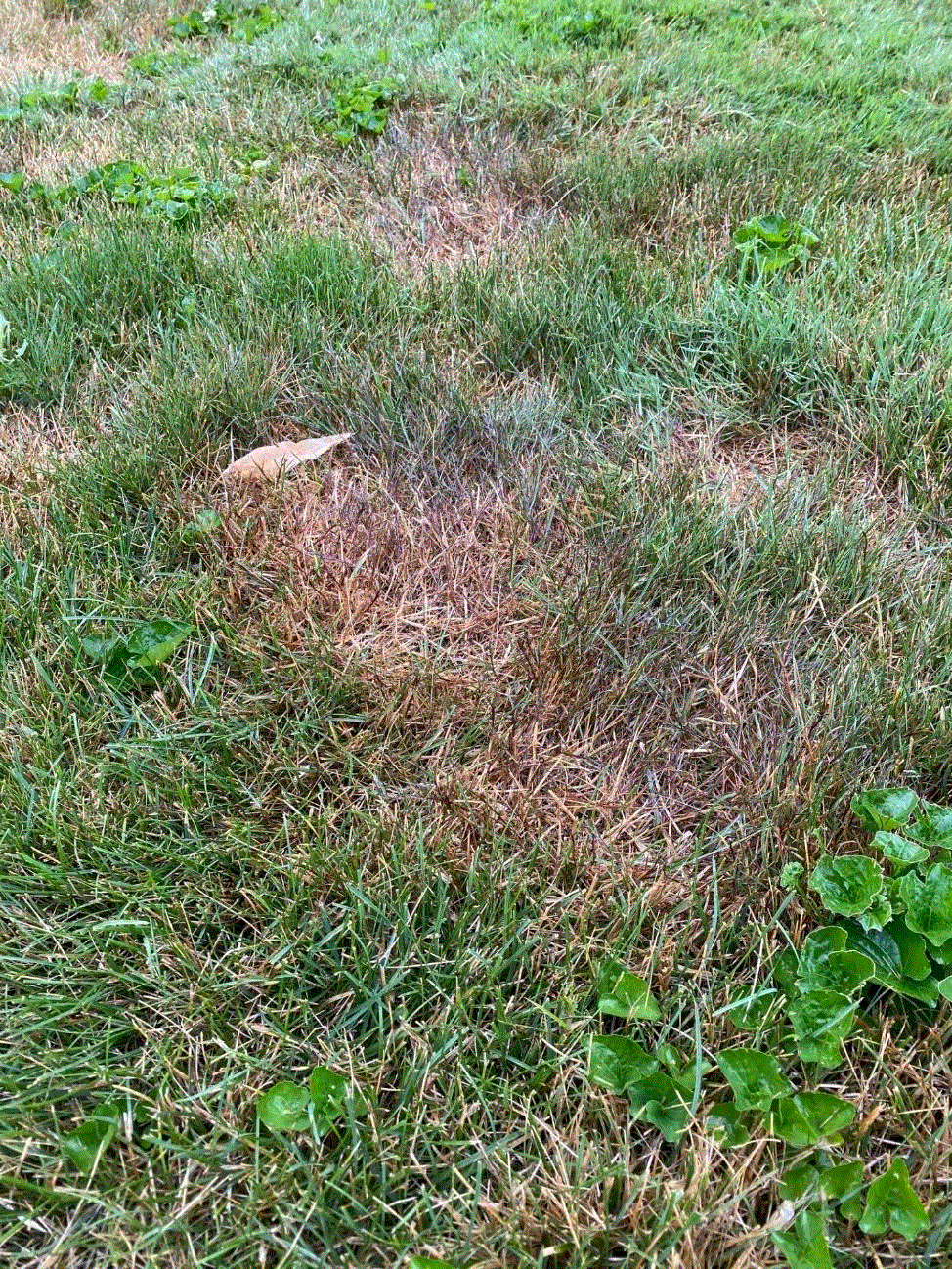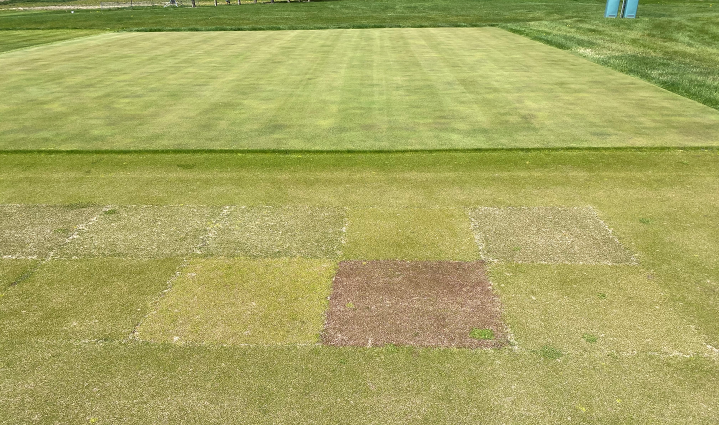By Andrew Hollman
Earlier this year, a horticulturist at the University of Minnesota stopped me by the greenhouses for a quick turf question. He was having an issue with an area on a nearby slope and the grass was turning purple and then browning out. Water, fertility, and pests were what the manager inquired about as a possible cause for the issue along with what he could apply to correct it. Since we were nearby, it was easier to physically inspect the site rather than offer conjectures on what it could be. Looking at the site it was clear that multiple species had populated the area (Figure 1). Kentucky bluegrass was present along with large patches of two different stoloniferous grasses, creeping bentgrass and rough bluegrass or Poa trivialis. The later was the reason for his concern. Although rough bluegrass does well in shady environments with ample water, it turns purple in full sunlight during the heat of summer (Figure 2).
A quick identification of the species that was showing the symptoms revealed that there was nothing to be applied to correct the issue. I was glad that he got my attention before time and resources were wasted. Two previous site visits stick in my memory where this did not occur. In one, the homeowner had applied fungicides multiple times before the problem was identified as rough bluegrass turning purple in the middle of summer (Figure 3).
In the second, a south-facing slope was completely brown and dead and the homeowner wanted the landscape company to fix their lawn for free. The dead stolons that were present indicated it could have been several species, but the presence of creeping bentgrass thriving in other areas of the lawn, made creeping bentgrass the likely species. This area was previously heavily shaded by a large American elm. With its removal the previous fall, the stoloniferous turf that was adapted to heavy shade and a shallow root zone did not survive. In assessing sites as a turf manager, knowing the species that are present can save time, labor and unnecessary applications from misdiagnosis of a problem.


